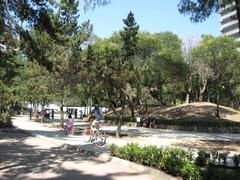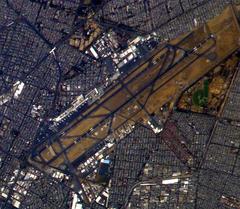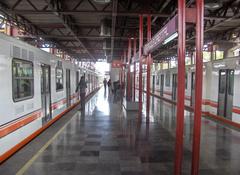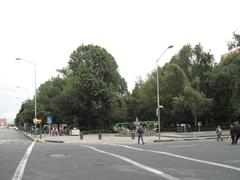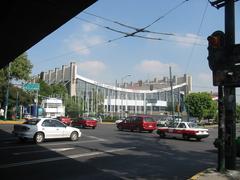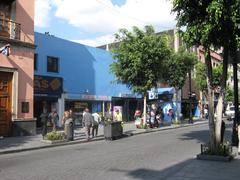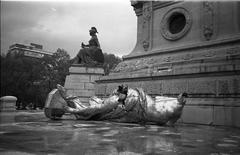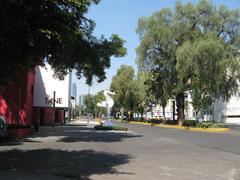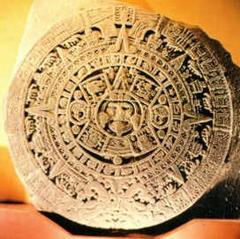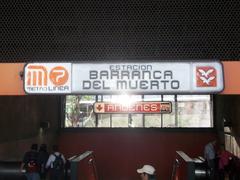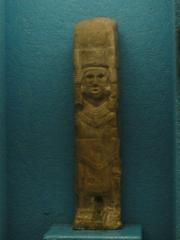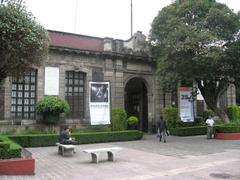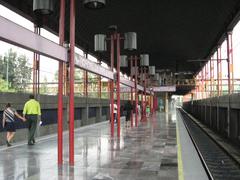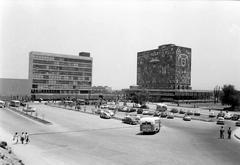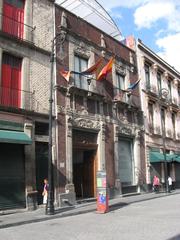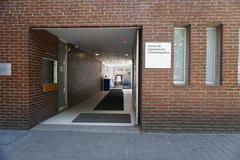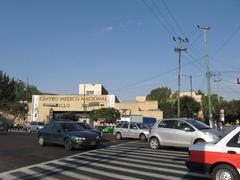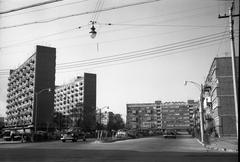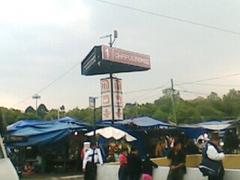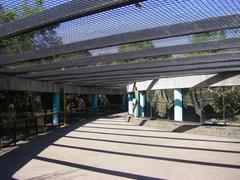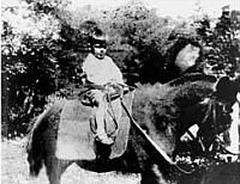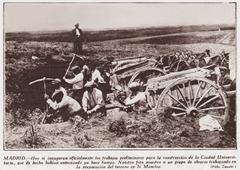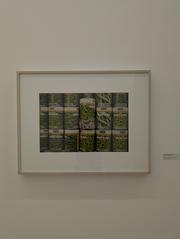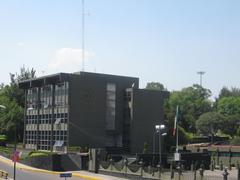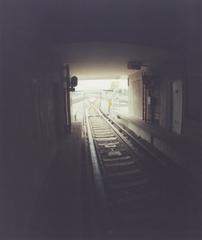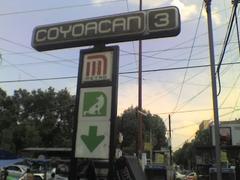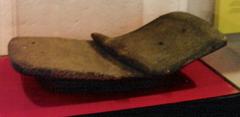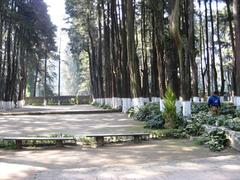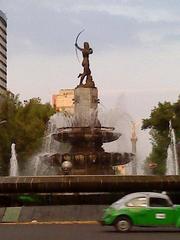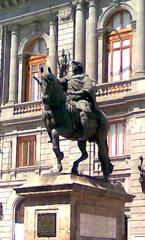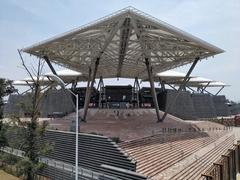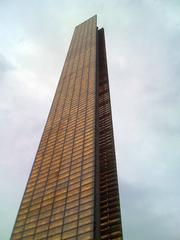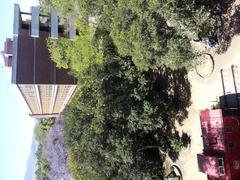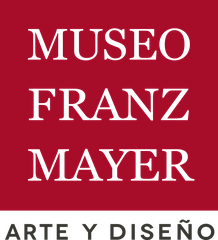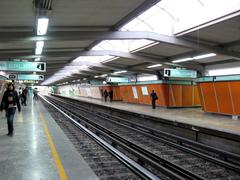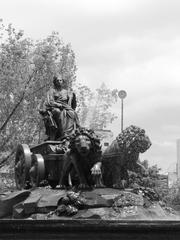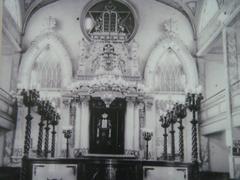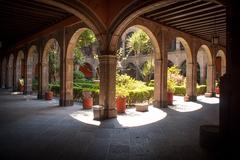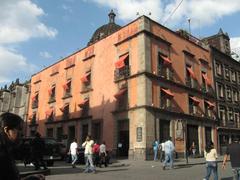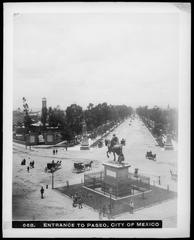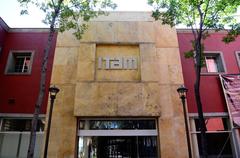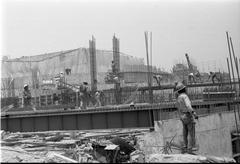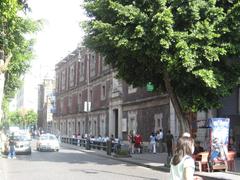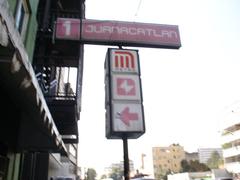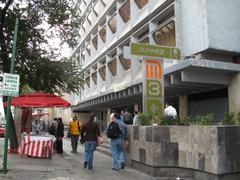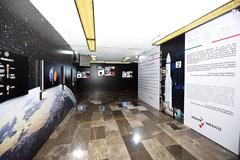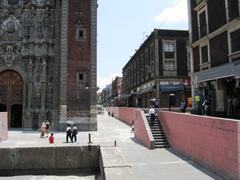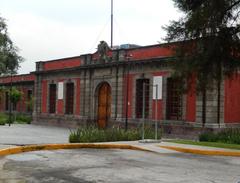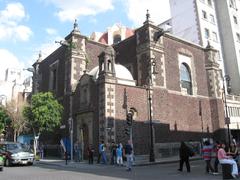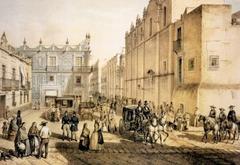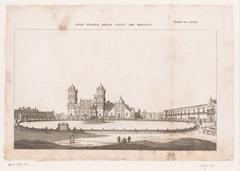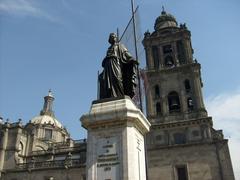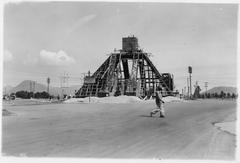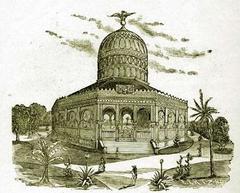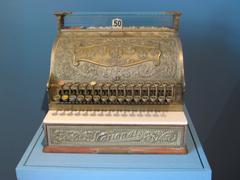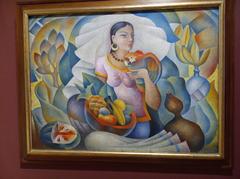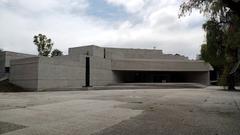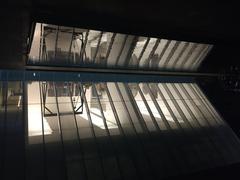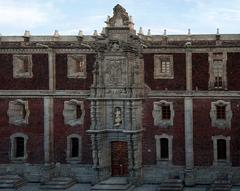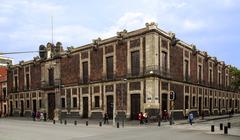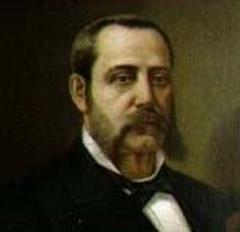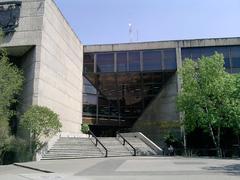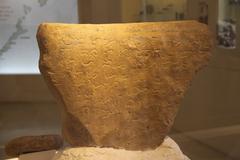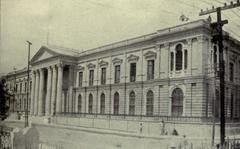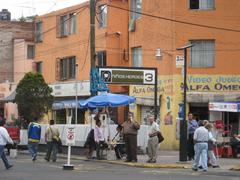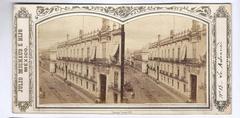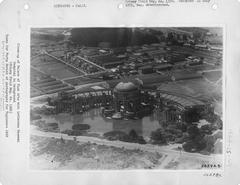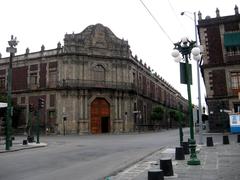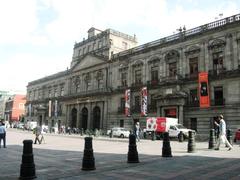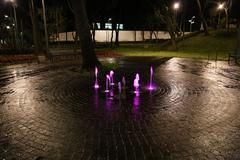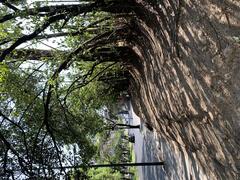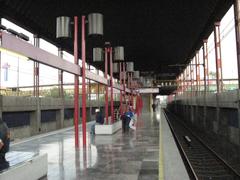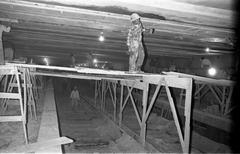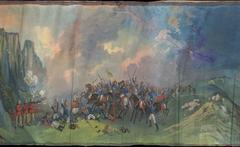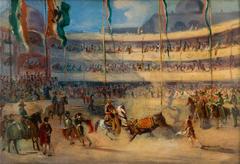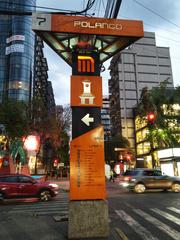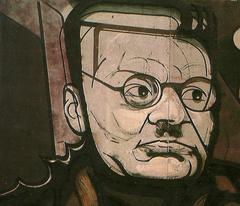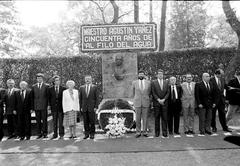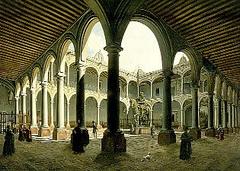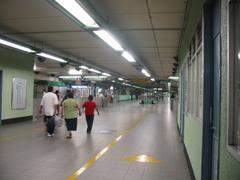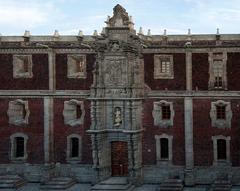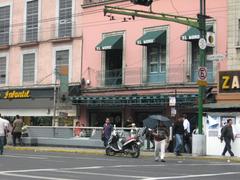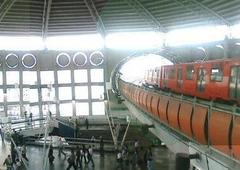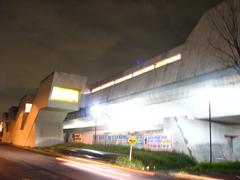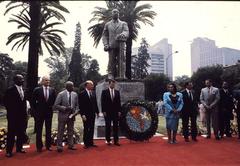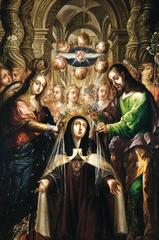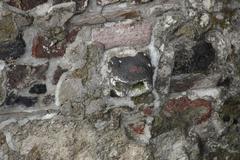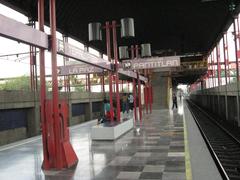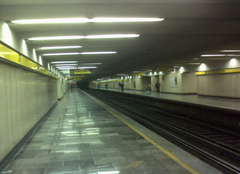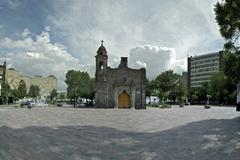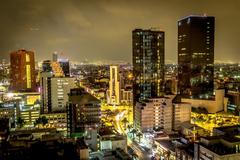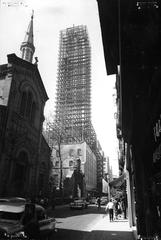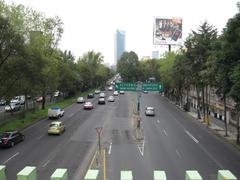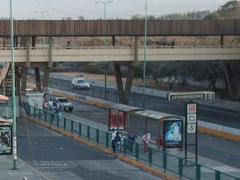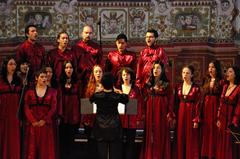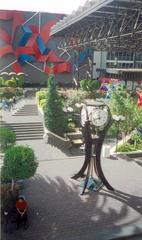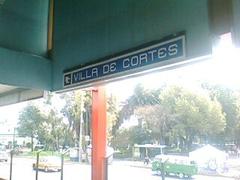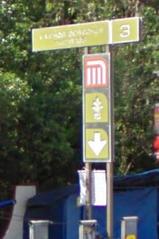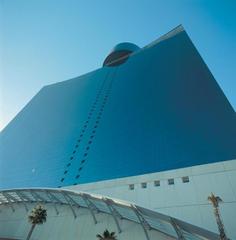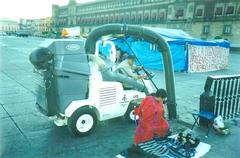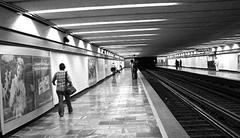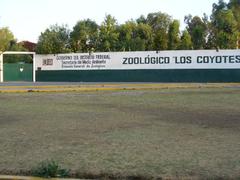Visiting Basílica de Santa María de Guadalupe: History, Significance, Visitor Tips, and More
Date: 16/07/2024
Introduction
The Basílica de Santa María de Guadalupe, nestled in the northern neighborhood of Villa de Guadalupe Hidalgo in Mexico City, stands as a profound testament to faith, history, and Mexican identity. More than just an architectural marvel, this sacred site is intrinsically linked to the nation’s cultural and spiritual fabric. Every year, millions of visitors, including pilgrims and tourists, flock to this iconic basilica, making it one of the most visited religious sites in the world. The basilica’s history dates back to December 1531, when an indigenous man named Juan Diego reported apparitions of the Virgin Mary on Tepeyac Hill. This miraculous event, where the image of the Virgin Mary imprinted on Juan Diego’s tilma (cloak), has since become a central symbol of faith and reassurance for the Mexican people (Britannica). Over centuries, the site has evolved to accommodate the growing number of devotees and visitors, from the initial shrines to the grand Old Basilica and the modern New Basilica designed by Pedro Ramírez Vázquez. Today, the Basílica de Santa María de Guadalupe not only serves as a place of worship but also as a beacon of hope, resilience, and national pride (Culture Trip). This comprehensive guide aims to provide an in-depth look at the basilica’s rich history, its cultural and spiritual significance, and practical visitor information to ensure a memorable and respectful experience for all.
Table of Contents
History and Significance
The Apparitions and the Tilma
The story begins in December 1531, when a humble indigenous man named Juan Diego claimed to have witnessed apparitions of the Virgin Mary on Tepeyac Hill. During the second apparition, the Virgin instructed Juan Diego to gather roses, which miraculously bloomed in the middle of winter. When Juan Diego presented the roses to the skeptical Archbishop Juan de Zumárraga, the image of the Virgin Mary was imprinted on his tilma, a simple cloak made of cactus fiber (Britannica).
This miraculous image, known as the Virgin of Guadalupe, became a powerful symbol of faith for the indigenous people of Mexico, who were rapidly converting to Christianity. The Virgin of Guadalupe, with her dark complexion and indigenous features, represented a bridge between the old and new religions, offering comfort and hope during a time of great social and cultural upheaval (Britannica).
The First Shrines and Growing Devotion
A shrine was quickly built on Tepeyac Hill to house the miraculous tilma, attracting pilgrims from all over Mexico. The devotion to the Virgin of Guadalupe grew rapidly, fueled by stories of miracles and her role as a protector of the Mexican people. In 1754, Pope Benedict XIV officially recognized the apparitions and declared the Virgin of Guadalupe the patroness of New Spain (Britannica).
The Old Basilica and its Challenges
In 1709, a larger church, now known as the Old Basilica, was completed to accommodate the growing number of pilgrims. This Baroque-style basilica served as the main shrine for centuries, but by the 20th century, it began to sink due to the unstable ground beneath it (Britannica).
The New Basilica - A Modern Marvel
To protect the sacred image and accommodate the millions of pilgrims who visit each year, a new basilica was constructed in the 1970s. This modern, circular structure, designed by Mexican architect Pedro Ramírez Vázquez, can hold up to 10,000 worshippers. The tilma is now displayed above the main altar, allowing pilgrims to view it from a moving walkway beneath (Culture Trip).
A Symbol of Mexican Identity
The Basilica of Guadalupe is not just a religious site; it’s a symbol of Mexican national identity. The Virgin of Guadalupe played a key role in the Mexican War of Independence, with Miguel Hidalgo y Costilla, a Catholic priest and leader of the rebellion, using her image as a banner for his troops (Britannica).
Today, the Virgin of Guadalupe is revered by Mexicans of all backgrounds, regardless of their religious beliefs. She represents hope, resilience, and the strength of the Mexican people. The Basilica of Guadalupe continues to be a place of pilgrimage, prayer, and national pride, attracting millions of visitors each year.
A Place of Miracles and Faith
The Basilica of Guadalupe is also known for its association with miracles. Countless stories have been told of people experiencing healing, finding solace, and receiving answers to their prayers at the shrine. One of the most famous miracles occurred in 1921, when a bomb planted near the tilma exploded, damaging the altar and surrounding area but leaving the image of the Virgin completely unharmed (Culture Trip).
A Global Pilgrimage Destination
The Basilica of Guadalupe is the most visited Catholic pilgrimage site in the world, attracting over 20 million visitors annually. The largest pilgrimage occurs on December 12th, the feast day of Our Lady of Guadalupe, when millions of people from all over Mexico and beyond gather to celebrate and pay homage to the Virgin (Travel Mexico Solo).
Visitor Information
Visiting Hours
The Basilica de Santa María de Guadalupe is open daily from 6 AM to 9 PM. It is best to visit early in the morning or late in the afternoon to avoid crowds.
Tickets and Admission
Entrance to the basilica is free of charge. However, donations are welcome and help maintain the site.
How to Get There
The basilica is located in Villa de Guadalupe Hidalgo, Mexico City. It is easily accessible by public transportation. The nearest metro station is La Villa-Basílica, which is on Line 6. From there, it’s a short walk to the basilica.
Travel Tips
- Dress Code - Modest attire is advised as it is a religious site.
- Photography - Photography is allowed in most areas, but be respectful of worshippers.
- Guided Tours - Consider taking a guided tour to learn more about the history and significance of the basilica.
Nearby Attractions
- Tepeyac Hill - The site of the original apparitions, offering panoramic views of Mexico City.
- National Shrine of Our Lady of Guadalupe - Located nearby, this site offers additional historical context and religious artifacts.
Accessibility
The basilica is wheelchair accessible, with ramps and elevators available. There are also accessible restrooms and seating areas.
Special Events
The basilica hosts numerous events throughout the year, including masses, religious festivals, and special pilgrimages. Check the official website for a calendar of events.
Photographic Spots
- Main Altar - Capture the beautiful image of the Virgin of Guadalupe above the altar.
- Tepeyac Hill - Offers stunning views and a picturesque setting for photos.
Conclusion
The Basilica de Santa María de Guadalupe stands as a testament to the power of faith and the enduring legacy of the Virgin of Guadalupe. It’s a place where people from all walks of life come to seek solace, offer prayers, and connect with a symbol of hope that has resonated with millions for centuries. Whether you are a pilgrim or a tourist, visiting this sacred site is a profoundly moving experience.
FAQ
What are the visiting hours for the Basilica de Santa María de Guadalupe?
The basilica is open daily from 6 AM to 9 PM.
Is there an entrance fee?
No, entrance to the basilica is free, but donations are welcome.
How can I get to the basilica?
The nearest metro station is La Villa-Basílica on Line 6. From there, it’s a short walk to the basilica.
Are guided tours available?
Yes, guided tours are available and recommended for those interested in learning more about the history and significance of the basilica.
Is the basilica accessible for people with disabilities?
Yes, the basilica is wheelchair accessible with ramps, elevators, and accessible restrooms.
Visit and Stay Up to Date
For more updates, download the Audiala mobile app, check out related posts, or follow us on social media.
References
- Basilica of Guadalupe. (n.d.). In Britannica. Retrieved from Britannica
- Our Lady of Guadalupe, patron saint of Mexico. (n.d.). In Britannica. Retrieved from Britannica
- Basilica de Guadalupe: Here’s why this is the most visited Catholic pilgrimage site in the world. (n.d.). In Culture Trip. Retrieved from Culture Trip
- Virgin of Guadalupe in Mexico. (n.d.). In Travel Mexico Solo. Retrieved from Travel Mexico Solo
